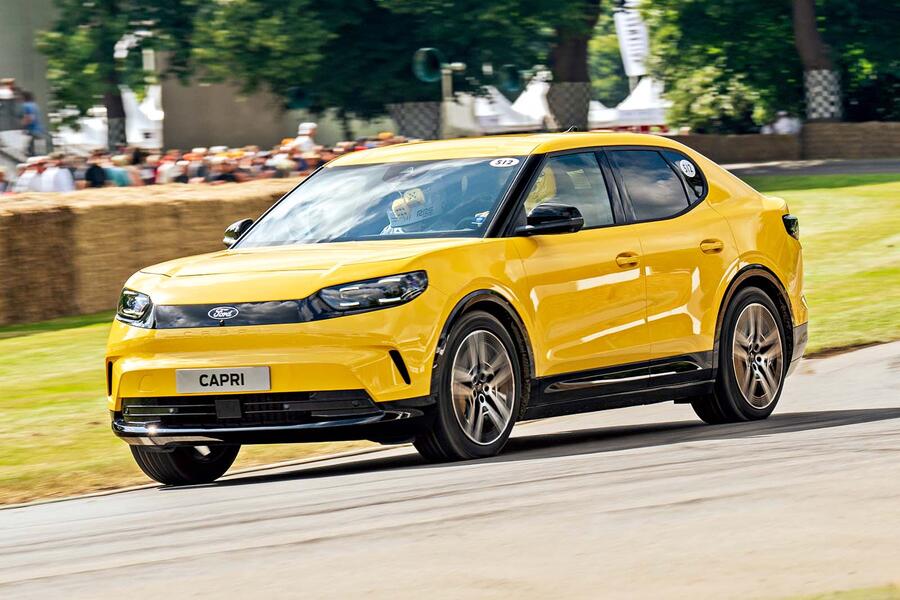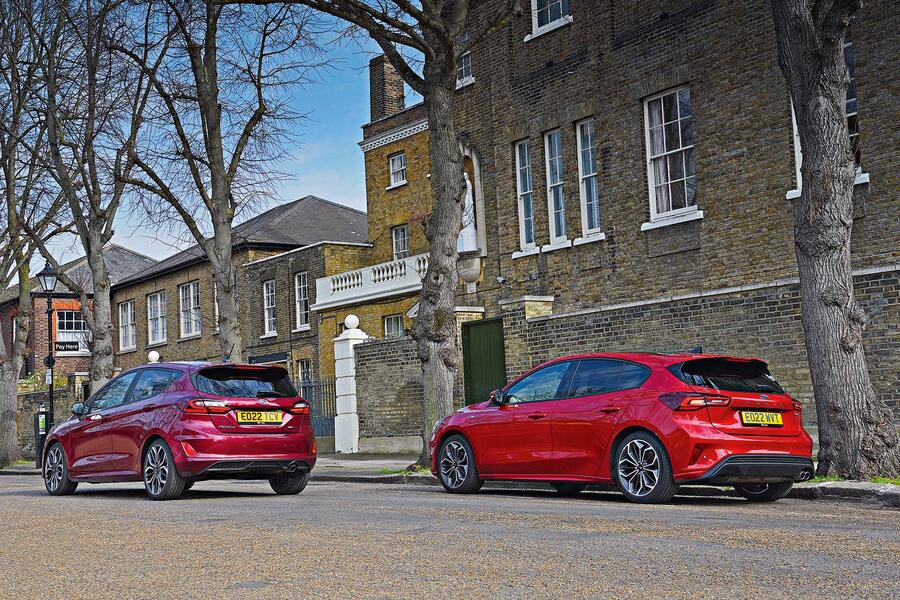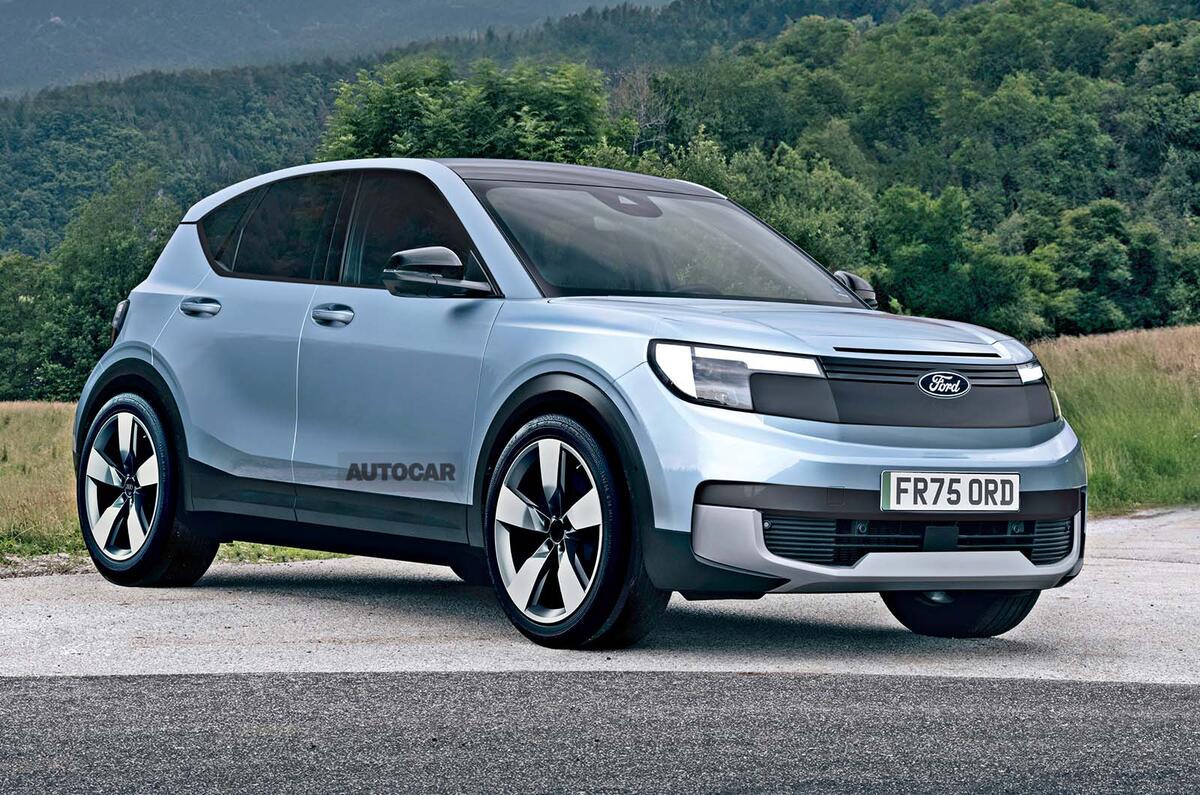A new range of smaller and more affordable electric Fords will be spawned from an upcoming ‘skunkworks’ architecture on which the firm aims to produce the world’s most efficient electric cars.
This new platform, the development of which is being led by a former Tesla engineer, could underpin spiritual successors to the Fiesta and Focus and a replacement for the Puma, as well as opening up the potential for other small cars from Ford.
The architecture programme is still in the engineering stages, yet it is the first concrete sign that Ford sees a way back to offering a whole suite of more affordable models underneath the new Explorer, Capri and Mustang Mach-E SUVs in addition to the Puma.
“We are spending a decent amount of time at the corporate level talking about affordability,” Marin Gjaja, chief operating officer of Ford’s Model E division, told Autocar recently.
“We know we need to do it and it’s a muscle we need to build up over time.
“If you look at our line-up globally, at this point we don’t really have much in the affordable segment. The key for us is to be affordable, differentiated and profitable. For too long we stayed in the affordable segment, either at break-even or losing money.
“The question is: how do you compete in that segment, especially if you have got a very low-cost manufacturing location like China pumping out affordable vehicles?
“That’s the dilemma. There’s no question that if we’re going to be a true mass brand, we want people to graduate to a vehicle like Explorer, but where do you start them? That’s what we’re doing in the US with an affordable platform, and there’s no reason why that platform wouldn’t be able to create products for Europe as well.”
The architecture would be used for an obvious replacement for the next Puma. That would inevitably be an electric model and serve as a replacement for the current Puma’s electric variant, which will join the range later this year.
The first car based on the new platform – which will be launched first in the US – will arrive in “late 2026 or early 2027”, said Gjaja.
The prospect of other models is theoretical at the moment, but Gjaja’s comments around affordability bring hope as well as expectation that the Puma will not be the sole Ford below the Explorer.
Given the Explorer is 4.5 metres long and starts at £40,000, there is plenty of room below it for the Puma to be joined by other models.
“Our sense is the uptake on electric vehicles will be more smaller vehicles over time,” he predicted.
“That’s where you will see the most acceleration because that’s the group that’s going to be most sensitive to fuel costs – because the more affordable the vehicle, typically, the more the driver is focused on cost. And they don’t have as much emotion associated with the size of the vehicle or how luxurious it is.”

However, like all new Fords of the future, whatever models come from the new architecture will not be conventionally shaped and sized and will be “differentiated” in their segments, according to Gjaja.
He explained the rationale behind the skunkworks programme: “It’s headed up by Alan Clarke. Alan is the EV architect who designed EVs that actually make money.
He was at Tesla for many years, and his role was in the first two years of a development programme to shepherd it until it went to scale and purchasing. He led the team that designed, engineered, sourced and worked out how to build it.
“He came to Ford a couple of years ago and is trying to build the most efficient platform of any EV on the planet. That’s the goal.”
A recent report by US site TechCrunch revealed that the team working on the architecture totalled around 300. It included other engineers from the likes of Tesla, Rivian and Apple, and even Formula 1 aerodynamicists.
When news of the incoming architecture was first revealed in February, Ford CEO Jim Farley said: “All of our EV teams are ruthlessly focused on cost and efficiency in our EV products, because the ultimate competition is going to be the affordable Tesla and the Chinese OEMs.”
Gjaja said the new architecture is likely to make use of lower-cost lithium iron-phosphate (LFP) battery technology, which is fast becoming dominant in EVs. “It’s a much more affordable technology and it’s also very durable,” he added.
“You’re taking $20-$30 per kilowatt hour out of the battery; BYD has been able to get more. With a 100kWh battery, that’s a lot [of cost out]. But if you’re someone who charges a lot, the battery is far more durable and can take probably five times the duty cycles. These batteries are basically indestructible.
“We initially thought the chemistry wouldn’t perform as well in cold weather, but all of our results have shown it performs just as well. It’s only really a density difference [compared with previously more common nickelmanganese-cobalt batteries].”
The likes of the existing Puma and now the Explorer have begun to move Ford away from conventional models such as the Fiesta and Focus, and Gjaja said the Puma had already started to make the strategy work.
“We’re trying to take the Ford brand to a different place,” he added. “I think we were seen as cheap, cheerful, reliable transportation – a discount relation to some of the more premium brands.
“Now we’re actually introducing products that carry more of a premium. Puma was the first big step in that direction, where you felt like you had an execution that really could command a price premium. Our hope is that this [Explorer] will do the same. But that’s much easier said than done; we need to go and build that and deliver on that promise to customers. Then we will be able to see if we can get the price realisation from our customer set that justifies a vehicle like this.”
Anna Lena Strigel, director of sales and brand management at Ford Model E in Europe, said Ford will have a “smaller, more targeted portfolio” of models in the future, and will “not just be going for volume”.
Strigel said Ford dealers are used to shifting cars at volume, so engaging them was crucial to succeeding in the brand’s transformation.
Ford is, however, in effect pursuing a ‘double switch’ by not only moving away from being a mainstream brand with a model in every segment but also switching to electric power.
Strigel added: “Our dealers have done an excellent job moving many Fiesta customers up to Puma.
“The dealers, specifically in markets with less electrification, are nervous, but when they see and drive the Explorer, they get confidence. It’s about building trust with every individual salesperson.”
Q&A with Marin Gjaja, Ford Model E Chief Operating Officer
How are you still so confident that the EV market will grow?
“Even though everyone now says it’s disappointing how slow it’s growing, we have to step back and see that the market is 10 million units a year. If you look at the projections, even in 2018 the projections said today we would be at something like three million units.
“So it has come very fast – much faster than we expected in 2018. But now it seems slow when we’re back to 10-20% growth rates, and the US, China and Europe is flat right now.
“But it will come in fits and starts as new technologies come along, new segments get attacked, new geographies, subsidies, changes in interest rate, changes in gas prices – all those things are going to change the growth rate a little bit up or down. But it’s still going to grow faster than the ICE business is going to grow.” Ford planned to sell only electric passenger cars in Europe by 2030.
Was that too ambitious?
“Yeah, I think customers have voted, and they told us that was too ambitious – and I think everyone in the industry has found that out the hard way. I would also say reality has a way of making you adjust your plans.” “We don’t see that going all-electric by 2030 is a good choice for our business or, especially, for our customers.”

With that in mind, did the Fiesta die too soon?
“I don’t think so. I think we needed to have a really competitive electric vehicle here in Europe. And we think that having Explorer and Capri now puts us in a really good position. It’s forcing us to take a leap into the future.
“I think the real judgement of that is going to be five years from now, when we look back and say: ‘Where are we? Are we in a better spot than we would have been had we run out Fiesta for another two or three more years?’”








Join the debate
Add your comment
Where are FORD Europe going to end up in 5 years, another VW sub-brand, selling Stellantis clones or re-badged MG's?
I see the journalists favourite word in here - "could". There seems to be no guiding light from Ford on this at all. Having been through the pain of stepping back from wafer thin margin high volume work I very much doubt jumping back in will be a priority for this new electric tool kit
“We are spending a decent amount of time at the corporate level talking about affordability,” Marin Gjaja, chief operating officer of Ford’s Model E division, told Autocar recently.
Talking! You have to have quite serious concerns for the likes of Ford when they put people like this in what are very influential positions.
How does a company like Ford get it so wrong.
Mach E - disaster
Explorer, Capri - Redesigned Volkswagens, trading on nostalgia in their names, as it's the only weapon they have to compete with the Chinese
This - Tesla
Western manufacturers seem to be so blinded by the percieved threat of Chinese cars flooding western markets, they seemed to have almost convinced themselves they are out of the race.